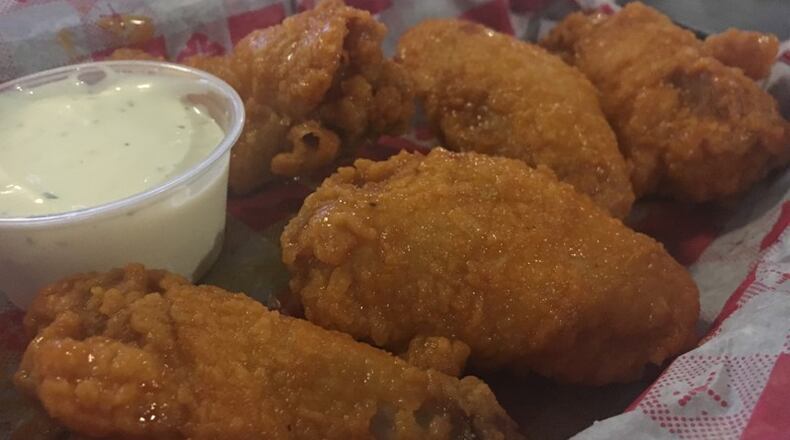RELATED: National Chicken Wing Day 2017: Deals from Buffalo Wild Wings, Applebee's, Hooters and more
Jim Manley, marketing manager for Miamisburg-based Fricker’s in Ohio, Michigan and Indiana, said any time a commodity price rises, his chain and others will feel it.
“Like any good business, we have to do what everyone does — we have to adjust,” Manley said Tuesday. Profit may fall a little, he acknowledged, but the company will still provide a “quality product.”
RELATED: New Dayton food truck opens 'weekend BBQ stand' near arcade-bar
If there’s a bright side to the price boost, it’s this: It’s being fueled by strong demand for the product, according to Bloomberg and industry observers.
“There’s no question about it,” Manley said. “Chicken I think is the No. 1 protein in North America right now.”
Beef prices have been high in recent years while pork prices have been relatively lower, he said. The company pairs both of those meats with its mainstay chicken dishes in ways that take advantage of those price spreads.
“When prices go up, we just have to tighten our belts a little bit and make the best of it,” Manley said. “We recognize that this, too, shall pass, and when it does, we’ll reap the benefits of having a good steady business.”
Terence Wells, poultry price analyst with Toms River, N.J.-based Urner Barry, which tracks meat and seafood prices, said demand from the “major wing houses,” which are adding restaurants each year, along with pizza places adding wings to menus, are fueling demand.
Even convenience stores, such as 7-11, are adding wings to their offerings, he said.
“Don’t count out the local mom and pop shops right now, either,” Wells said. “You go to any restaurant right now, there are wings on the menu, right?”
And while the supply of chickens is increasing, it’s probably not fast enough to keep up with demand, he added.
Nicole Cox, marketing director for Dublin, Ohio-based Roosters Inc., agreed that chicken prices are higher than they have ever been.
“We have no intention of raising our prices,” Cox said. “Our main focus is taking care of our guests, making sure they have great service and a good product. That’s the most important thing to us.”
And while Roosters may be known for its wings, the chain also offers pizzas and subs. “That really kind of offsets the rise. It’s just part of the business,” she said.
Raising prices would be self-defeating, she argued.
“If you raise prices, then your guests are hesitant to come in,” Cox said. “They’re watching how much they spend. If we just keep providing affordable, (offering) great food and great service, they’re going to keep coming, which helps us push through the rise in these prices.”
The problem is so acute that Minneapolis-based Buffalo Wild Wings has seen its earnings take a substantial hit. Last week, the company reported its net earnings decreased 62.9 percent to $8.8 million from $23.7 million.
“Our profitability was pressured this quarter driven by historically high wing costs, a mix shift to our promotional days, lower than expected same-store sales, and higher operating expenses,” Sally Smith, the company’s president and chief executive, said in an earnings release.
Looking forward to the rest of the year, the company said it expected traditional chicken wing price inflation of 8 percent to 10 percent. (Recall that Buffalo Wild Wings recently ended its popular half-price special for wings.)
How long can higher prices persist? Wells called today’s prices “uncharted territory.”
“We’ve never seen anything like this; who the heck knows where it’s going,” Wells said.
About the Author

